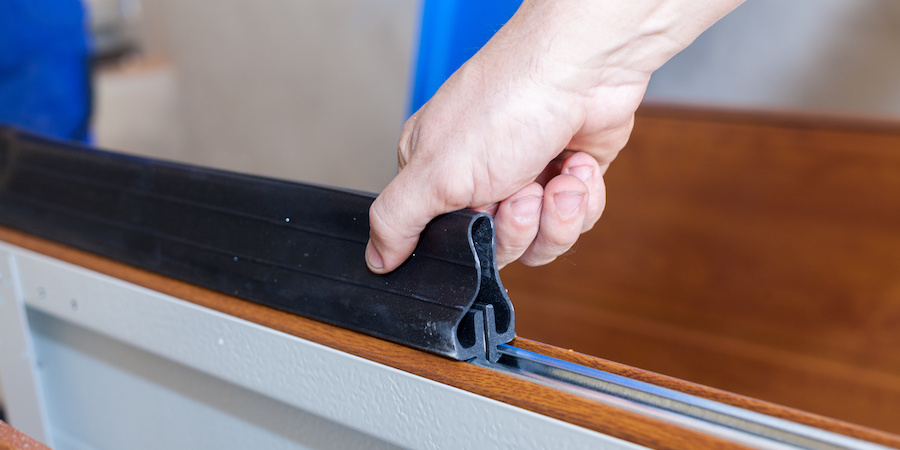There are a few reasons your garage floor could have standing water around your garage door opening, and most causes are treatable. From sun-beaten and broken-down weatherstripping to a loose-fitting garage door, we will walk you through the most common causes of water infiltration and how to stop water from entering your garage.
A reminder: your garage is not weathertight
Unlike entry and patio doors, garage doors do not provide a weathertight seal. Whether you have steel, wood, or a glass garage door, they are not meant and should not be expected to weatherize a space completely. At best, garage doors will have perimeter seals and bottom weatherstripping to limit debris from entering the garage door, but they do not perform as well as your front or patio door should.
Four things you can do to keep water out of your garage
- Replace your garage door weatherstripping
- Easy to implement, readily available and affordable
- Maintain and adjust your existing garage door.
- Easy to implement, readily available and affordable
- Address garage door overhang
- Expensive to add after construction
- Install a garage door threshold.
- Easy to implement, readily available and affordable
1 – Garage door weatherstripping
The number one reason water gets into garage doors is that the weatherstripping is worn out or damaged.
The most commonly damaged garage door seal is the bottom seal. It is installed on a track with fasteners or stapled to the bottom of your garage door. It is the most commonly damaged seal because it lands on concrete whenever your garage door opens.
Perimeter seals are installed on both sides of the door and across the top. Steel garage door perimeter seals are vinyl and nailed to the garage door jambs, which helps shed water down the door. Once compromised, water can go behind the seals into the garage.
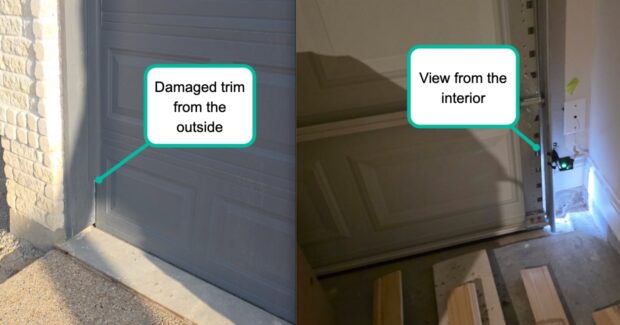
If you see daylight and have standing water, you might consider replacing your weatherstripping.
Should you be able to see daylight around your garage door?
The short answer is that it depends. Because of how garage door jambs are trimmed and installed, the most common place we see daylight is near the bottom on both sides. Builders will miter the door jambs at a 45-degree angle so they do not touch the ground. Avoiding ground contact is key for untreated lumber. This leaves a slight gap at the bottom of the garage doors where daylight will be even with installed weatherstripping.
Unless you have a wood door, there should not be any daylight from around the sides and top of your garage door. Some wood garage trim is built from wood strips that do not have a flange on them, so there is no contact with the door. That means, at certain times, a slight amount of daylight could enter your garage door.
2 – Maintaining and adjusting your garage door
Most garage doors sit flush or nearly flush against perimeter trim. However, over time, your garage door may start to loosen up, creating a 1/2″ or more gap between the door and the trim. With proper maintenance and annual tune-ups that include resetting your garage door, this should never reach the point of allowing water in.
However, if it has been years since your last tune-up, and you see space between the door and exterior trim, it’s time to call your local garage door company to service your doors.
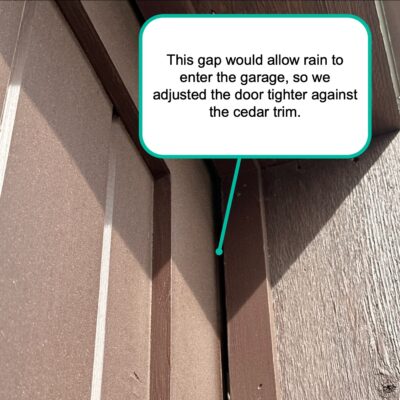
3 – Gutters and overhangs
If your garage door does not have an overhang, you are more likely to have water pool in your garage. A solid overhang or gutter system can keep your garage door from taking on too much water. Blocked-up gutters can cause water to spill over instead of flowing away as intended. Most gutter cleaning companies recommend at least one cleaning per year.
If you are building a new home, talk to your architect about potential solutions to extend the life of your garage doors.
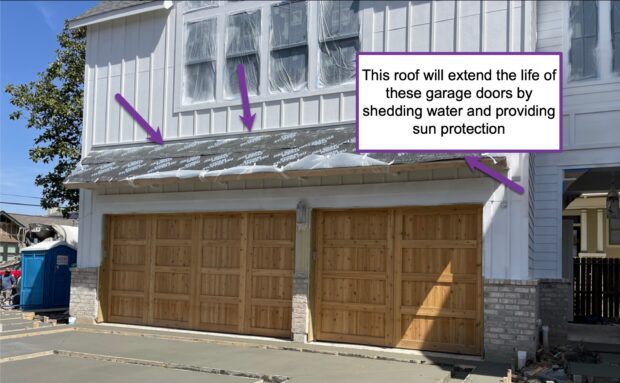
4 – A threshold for your garage
A garage door threshold might be the ideal solution to keep water out of your garage. It seals any gaps between the garage door and floorm keeping water, bugs, and rodents out of your garage. Available in heights from 1/2″ to 1-1/4″, these thresholds work alongside your garage door bottom seal to keep your garage clean and dry.
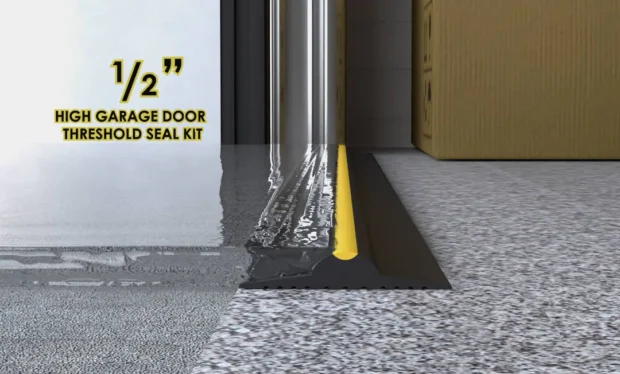
Final thoughts
Hopefully, this list helps you put a plan together to keep water from getting into your garage. At Doorvana Garage Doors, we understand how important it is to keep your garage maintained, cleaned, and in good shape.
When working with your local garage door service company, be sure to ask about these options to weatherize your garage.

